Dumbo may not be the first thing that usually comes to mind when you think of a beautiful fish like bettas. Still, the elephant ear betta, also known as Dumbo Halfmoon betta, is a stunning variety of this species slowly gaining popularity among fish enthusiasts. Its ornate, large pectoral fins and vast array of colors have made it a favorite in recent years.
This guide will teach you everything you need to know about elephant ear bettas, from dietary needs, care requirements, and breeding habits. If you’re considering adopting one of these unique creatures, read on to find out if they might be the right pet fish for you!
Characteristics/Appearance/LifeSpan
Common Name (species)
Elephant Ear Betta Fish, Betta Splendens, Siamese Fighting Fish
Family
Osphronemidae, Gourami
Origin
Southeast Asia
Diet
Carnivore
Care Level
Easy to Intermediate
Lifespan
Up to 5 years
Activity
Active, social, alert
Temperament
Gentle for the most part but can be territorial when threatened
Tank Level
Bottom
Minimum Tank Size
5 Gallons
Temperature Range
76-82 degrees Fahrenheit
Water Hardness
8 and 25 KH
pH Range
6.5 – 7.5
Filtration/Flow Rate
Calm
Breeding
Egg layer
Compatibility
Calm, similarly-sized fish
OK, for Planted Tanks?
Yes, but avoid plants with jagged edges
Activity Level/Temperament
Historically, bettas have been viewed as aggressive fish because they are used in fights for gambling purposes in their native countries. However, they are typically gentle and peaceful in a home aquarium environment unless provoked or threatened.
Of course, they aren’t entirely harmless. Elephant betta fish may be slow-moving due to their heavy fins, but they are still territorial fish. They need their own space and may become aggressive if they feel their territory is being encroached upon. Female bettas are slightly less territorial, but both genders can be nippy if they feel threatened.
Generally speaking, though, this is a cool betta fish breed that will liven up any home aquarium with its bright colors and active personality. They make great low-maintenance pets as long as their (relatively simple) care needs are met!
Compatibility/Mates
As far as tank mates go, it’s best to stick with other peaceful fish that won’t bully or nip at the betta’s fins. After all, you wouldn’t want tears or rips in those beautiful fins!
Some compatible tank mates for elephant ear bettas include:
- Neon tetras
- Ghost shrimps
- Corydoras
- Mystery snails
- Mollies
- Zebra Snails
As for fish to avoid, anything that is known to be aggressive or nippy should be off the table. This includes fish like tiger barbs and goldfish. Brightly colored fish should also be avoided, as they may be mistaken for a rival betta and trigger aggression.
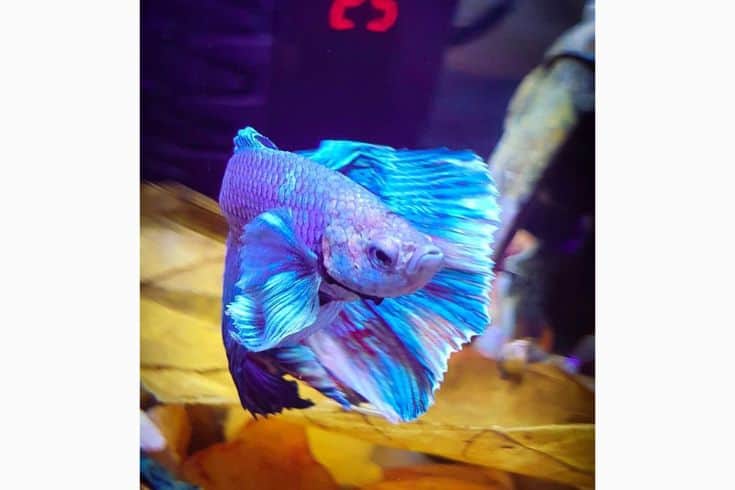
Feeding Guide
Having a healthy, well-balanced diet is crucial for any pet, and elephant ear bettas are no exception. Here’s a quick guide to what, and how often, you should feed your new pet:
What To Feed
Elephant ear bettas are carnivorous fish, and will do best on a balanced diet made up of different protein sources. Fish pellets are an important staple, but you should also supplement their diet with live or frozen foods like baby brine shrimps, freeze-dried worms, and daphnia.
You should also be sure to source your betta’s food from a trusted brand that uses high-quality ingredients. This will ensure that your fish is getting the nutrients it needs to stay healthy and happy. Most reputable pet stores will carry a variety of betta-specific foods that will work well for this fish breed.
How Often To Feed
As a general rule of thumb, you should feed your elephant ear betta 2-3 times per day. Feed small amounts of fish food at each meal, and only give them as much as they can eat in a few minutes. This tip applies to all betta fish species, as they tend to be voracious eaters who will overeat if given the chance!
The notion of greedy little overeating bettas may sound comical at first, but it’s actually a serious issue. Bettas are prone to swim bladder disorder and constipation, both of which can be brought on by overeating. In extreme cases, these health problems can even be fatal, so please adhere to a good feeding timetable and feed your fish in reasonable quantities!
Tank Requirements
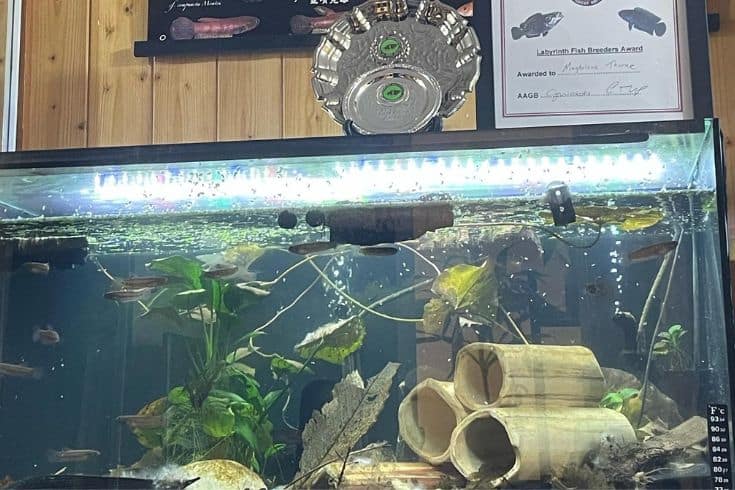
Now that you know a bit more about this fish breed, it’s time to start setting up their new home! Here are some essential tank requirements you’ll need to take care of before adding your new betta fish to the mix:
Tank Size
Here’s the deal – elephant ear bettas are sometimes housed solo, and that’s totally fine. However, if that’s the case, you need to ensure that they have at least a 5-gallon tank to themselves. There is a widespread misconception that bettas will do just fine in tiny little bowls, but that couldn’t be further from the truth.
Bettas are active fish that needs to produce a lot of waste. Bowls simply don’t contain enough to dilute the waste, and this can lead to poor water quality and stress down the line. Many betta fish owners find themselves with dead fish on their hands for this reason, so please do your research and give your fish the space it needs to thrive!
Now, if you do want to house your elephant ear betta with other species, you’ll need an even larger tank. For a small sorority of 3-5 female bettas, we recommend a 20-gallon tank. And if you want to establish a community tank with a variety of different fish species, you’ll need something in the 40-50 gallon range.
Tank Setup
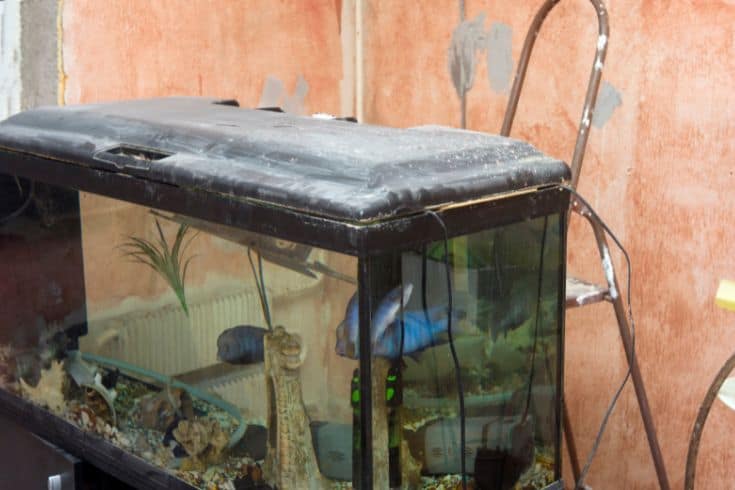
Are you ready to start setting up your new betta fish tank? Here’s a quick guide to setting up a basic solo tank for your elephant ear betta:
You will need:
- Appropriately-sized fish tank
- Water conditioner
- Heater
- Filter
- Substrate
- Live plants
- Aquarium test kit
Once you’ve gathered your supplies, you can start setting up your tank! Here’s a quick step-by-step guide:
1. Choose the perfect location for your tank.
Unless you live in a tropical climate, you will need to keep your fish betta tank indoors where the temperature is stable. Avoid placing your tank in direct sunlight, as this can cause algae growth.
2. Set up your tank.
Install a filter and heater according to the manufacturer’s instructions. Add your substrate of choice, and then decorate the tank with driftwood, plants, or any other aquarium-safe decorations.
3. Fill the tank with dechlorinated water.
Use a water conditioner to remove any harmful chemicals from the water. Most conditioners will also add beneficial bacteria to the water, which will help to establish the tank’s nitrogen cycle.
4. Cycle your tank and add your fish.
After the tank has been set up and filled with water, you’ll need to let it cycle for a few weeks before adding your fish. This process can be accelerated by adding live plants or using a bacterial starter culture.
5. Monitor your tank water quality.
Be sure to test your tank water quality regularly, and make any necessary adjustments to the filtration or water chemistry as needed.
And with that, you’ve established a basic solo tank for your elephant ear betta!
Habitat Requirements
Setting up a tank is only half the battle, however, as you also need to ensure that the water quality and habitat are right for your fish. Here are a few things you’ll need to keep in mind:
Water Requirements
Elephant ear bettas are a variant of the betta splendens, tropical fish originating from Southeast Asia. As such, they are used to warm water temperatures and high humidity levels. In the wild, bettas typically inhabit mildly acidic environments, so you’ll need to recreate these water parameters in the home aquarium.
In addition, bettas need a clean, ammonia-free environment in order to stay healthy. Ammonia is produced when fish waste breaks down and can quickly build up to toxic levels in a small aquarium. Keep ammonia levels as close to 0 ppm as possible by performing regular water changes and using a high-quality filter.
Filtration Requirements
Speaking of filters, bettas require a lot of filtration in order to stay healthy. A good rule of thumb is to use a filter that turnover 4-5 times the volume of your tank per hour. For example, a 10-gallon tank should have a filter that can turn over 40-50 gallons per hour.
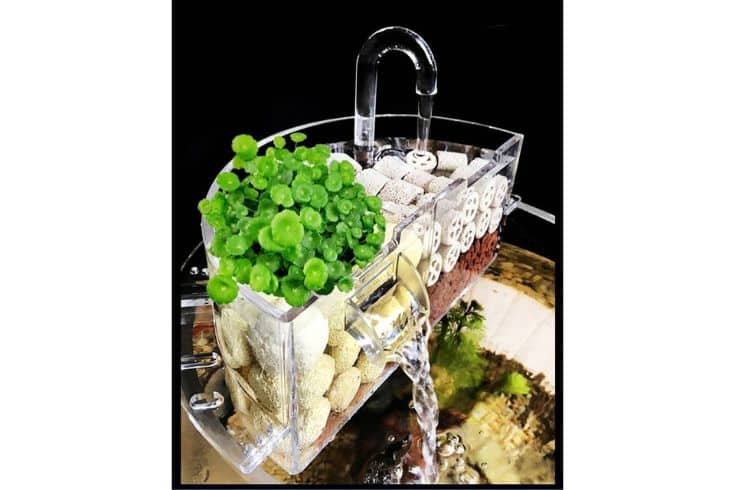
Bettas are also very sensitive to changes in water quality, so it’s important to have a stable environment. Make sure your filter has a biological media, such as ceramic noodles or BioBalls, which will help establish a beneficial bacteria colony. This bacteria colony will help to break down fish waste and keep ammonia levels in check.
Heat and Lighting Requirements
Bettas may be hardy fish species, but they are still tropical fish that need warm water to thrive. They appreciate a water temperature between 76-82 degrees Fahrenheit, though they can tolerate lower temperatures for short periods of time. Never keep bettas in cold temperature water as this can weaken their immune system and cause them to become sick.
As for lighting, bettas do not require direct sunlight or harsh lighting. In fact, too much light can cause them stress. A simple aquarium hood with a fluorescent bulb will provide enough light for live plants, while keeping your bettas nice and comfortable.
Plants and Decorations
Proper care extends beyond just keeping your bettas alive – you want them to be happy and thrive in their environment. One of the best ways to do this is to provide them with plenty of hiding places. This creates a sense of security for your bettas and allows them to explore their tank without feeling exposed.
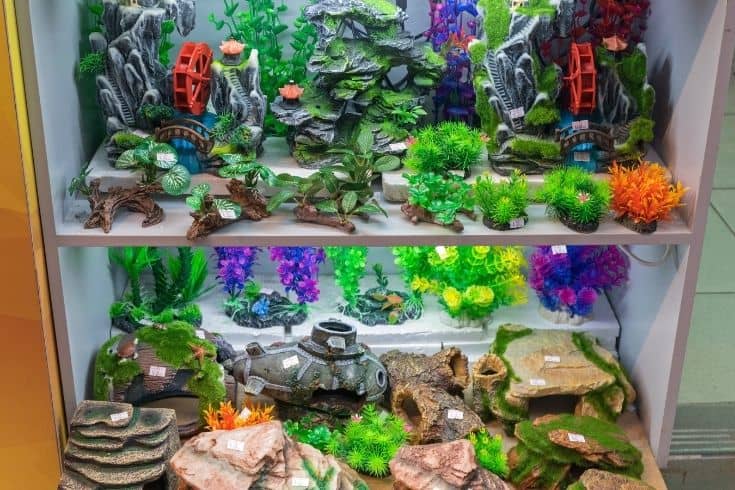
You can create hiding spots while also adding some visual interest to your tank by using live plants and aquarium-safe decorations. Fill your betta’s enclosure with freshwater plants, smooth rocks, and a sand substrate to give them the naturalistic environment they crave. Artificial plants work too, as long as you avoid those with sharp edges that could injure your bettas.
Habitat Maintenance
After designing the perfect home for your elephant ear betta, it’s important to maintain the water quality and habitat. A good betta fish tank maintenance routine will ensure that your fish has constant access to clean water and a comfortable environment.
Perform a partial water change every 1-2 weeks, or as needed to keep ammonia and nitrite levels in check. Test your aquarium water frequently, and take immediate action if you notice any signs of poor water quality.
Health
We all want our elephant ear bettas to live long, happy lives. Unfortunately, health issues can still arise, even when we provide the best care possible. We’ve compiled a list of the most common betta health problems, their symptoms, and treatment options.
Health Issue
Ich (White Spot Disease)
Symptoms or Causes
Ich is a very common disease that’s caused by an aquatic protozoan parasite.
Fish infected with Ich develop a sprinkling of tiny white spots on their fins, gill covers, and bodies. They also flash against the gravel and other solid objects in the aquarium.
Suggested Action
Raise the water temperature to 82o F for three days. Use an OTC White Spot Disease medication to treat the tank.
Health Issue
Flukes
Symptoms or Causes
Flukes is the term used to describe various types of external fish parasites. These macroparasites can often be seen with the naked eye attached to the fish’s skin or gills.
Suggested Action
Treat the fish tank with an OTC antiparasitic medication.
Health Issue
Fungal infections
Symptoms or Causes
White fluffy growths on the fish’s body, mouth, and head.
Suggested Action
Quarantine infected fish, and treat with an antifungal medication.
Health Issue
Bacterial infections
Symptoms or Causes
Sores and ulcers on the body and head, ragged, bloody fins.
Suggested Action
Treat the tank with OTC antibacterial treatment.
Of course, this is not an exhaustive list of every possible health problem that could affect your elephant ear betta. If you notice anything unusual about your fish, it’s always best to seek professional help from a vet specializing in fish health.
Breeding
Before we wrap up, we wanted to touch on breeding elephant ear bettas quickly. This is not a necessary part of care, but many hobbyists enjoy the process of watching their fish produce offspring. If you’re interested in breeding your bettas, here’s what you’ll need to do:
- Establish a separate breeding tank. This tank should be small (5 gallons or less) and contain soft, neutral-pH water.
- Identify your breeding pair. Male and female bettas can be distinguished by their appearance. Males are typically smaller, with longer fins, while females tend to be larger with shorter fins.
- Place the male and female fish in the breeding tank. Once they acclimate to their new environment, you need to trigger spawning. This can be done by slowly raising the water temperature over the course of a few days.
- The male will build a bubble nest at the surface of the water, and then court the female. If she is receptive, she will release her eggs, which he will then fertilize. The eggs fall to the tank floor, and the male picks them up and places them in the bubble nest.
- Once the eggs have hatched, the fry will be free-swimming. Take extra care to keep the breeding tank clean, as fry are very sensitive to poor water quality. You can feed them small live foods or specially formulated betta fry food.
That’s basically all there is to it! Breeding bettas can be a fun and rewarding experience, but it’s important to do your research before getting started.
Product Recommendations
We hope this article has been helpful in teaching you everything you need to know about elephant ear bettas. Before you go, we wanted to give you a few product recommendations to help you get started with your new fish:
- Tetra Freeze-Dried Bloodworms: These freeze-dried bloodworms make fantastic supplements to your betta’s main diet. Plus, they’re super cost-effective!
- Aqueon QuietFlow 10 E Power Filter: This filter is capable of filtering tanks up to 10 gallons in size, making it perfect for most betta tanks. Reviewers note that this is one of the quietest filters on the market.
- PULACO 25W Small Aquarium Betta Heater: Betta tanks need to be heated, and this preset heater does an excellent job of keeping things nice and warm for bettas. Don’t let its size fool you – it’ll keep tanks up to 6 gallons in size warm and properly heated.
This list is not exhaustive, but it should give you a good starting point for setting up your elephant ear betta’s new home.
The Takeaway
Now that you know everything there is to know about elephant ear bettas, it’s time to get out there and add one of these beautiful fish to your aquarium! With the proper care and attention, your betta will thrive in their new home and provide you with endless hours of enjoyment!
Do you know someone who’s thinking of getting an elephant ear betta? Share this article with them to help them make an informed decision! Thanks for reading, and happy fishkeeing!
